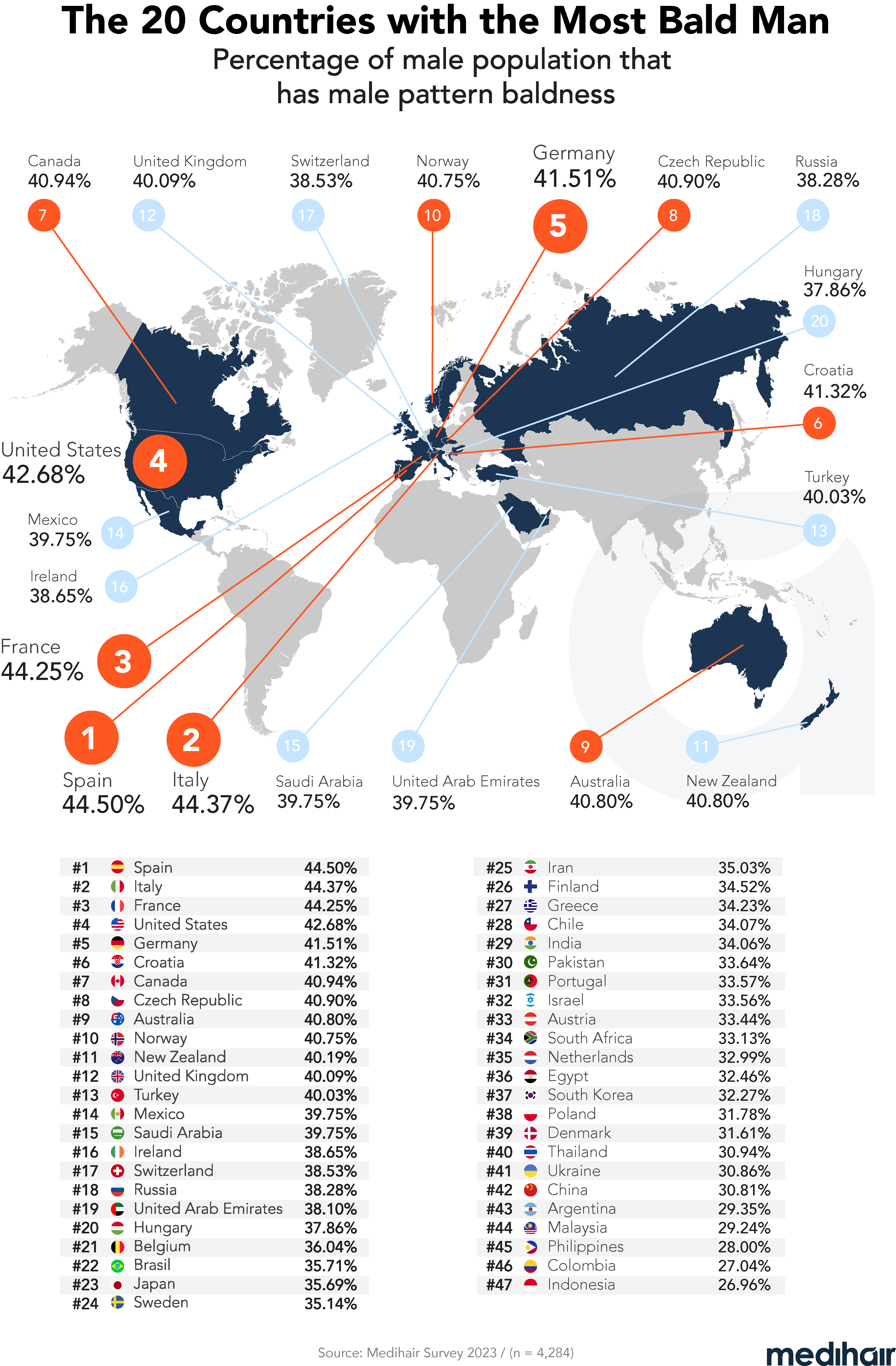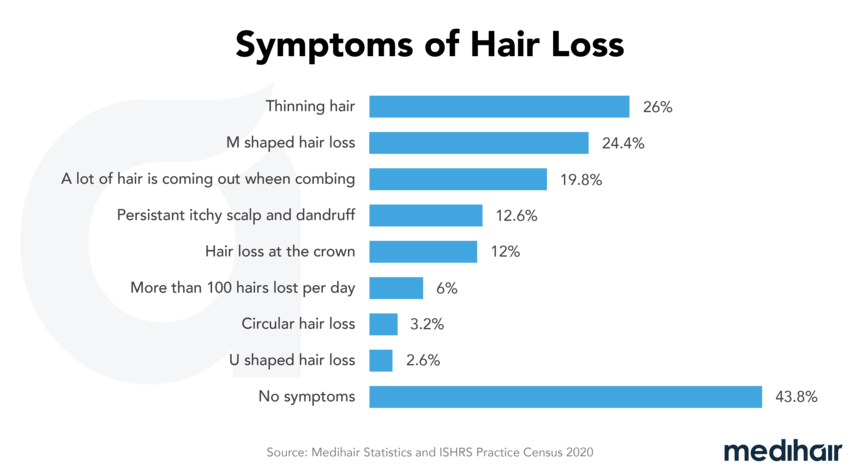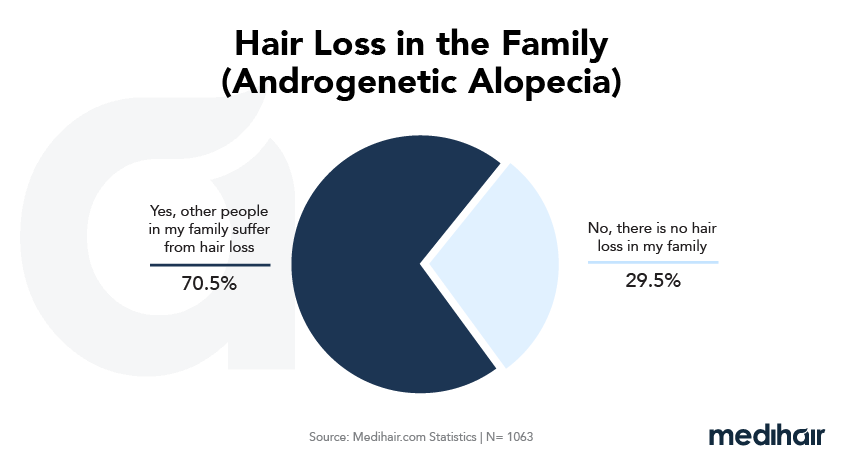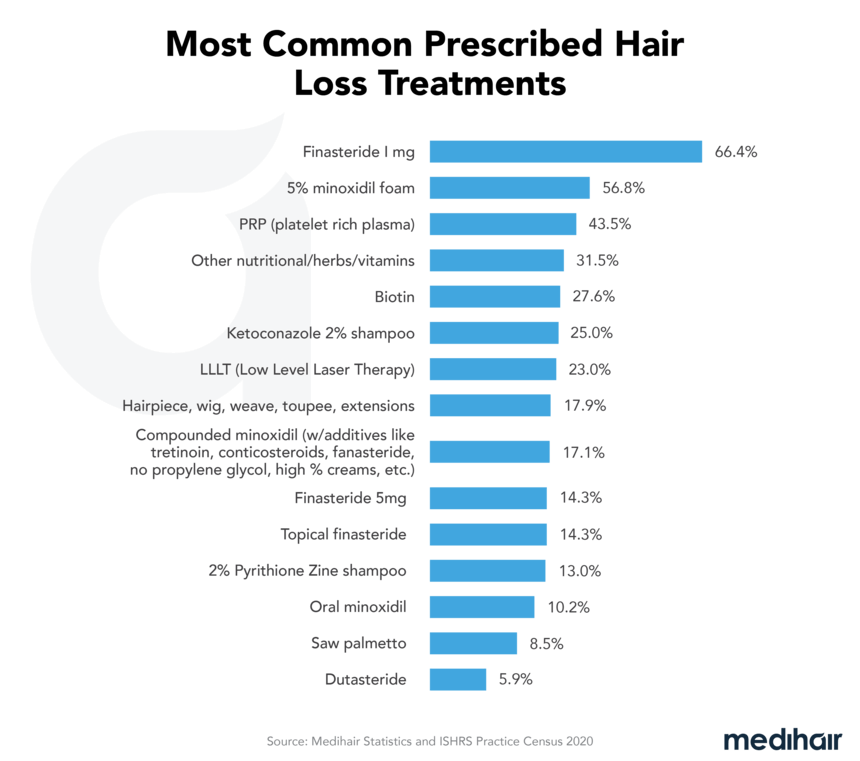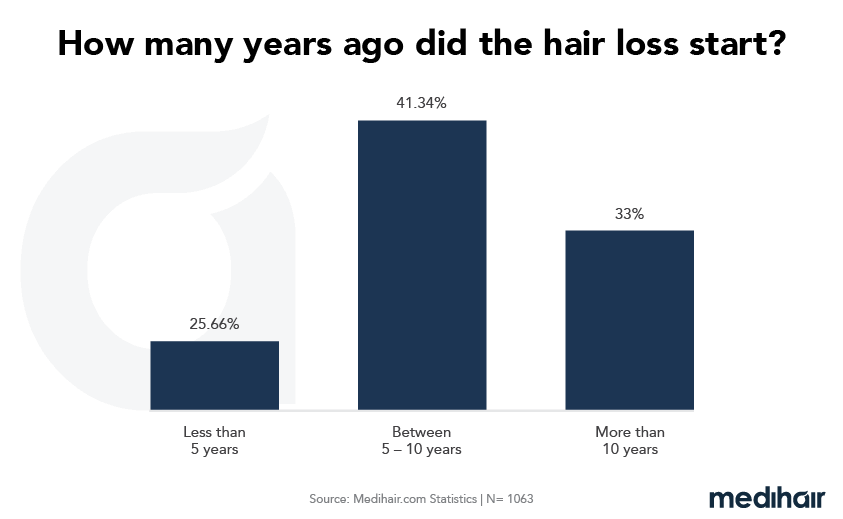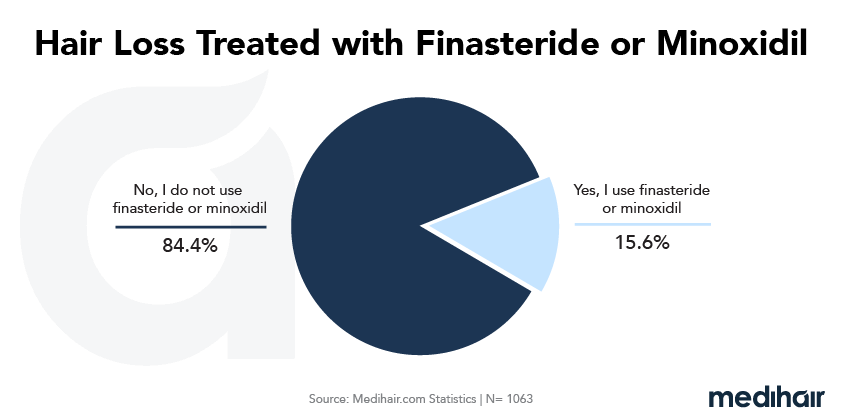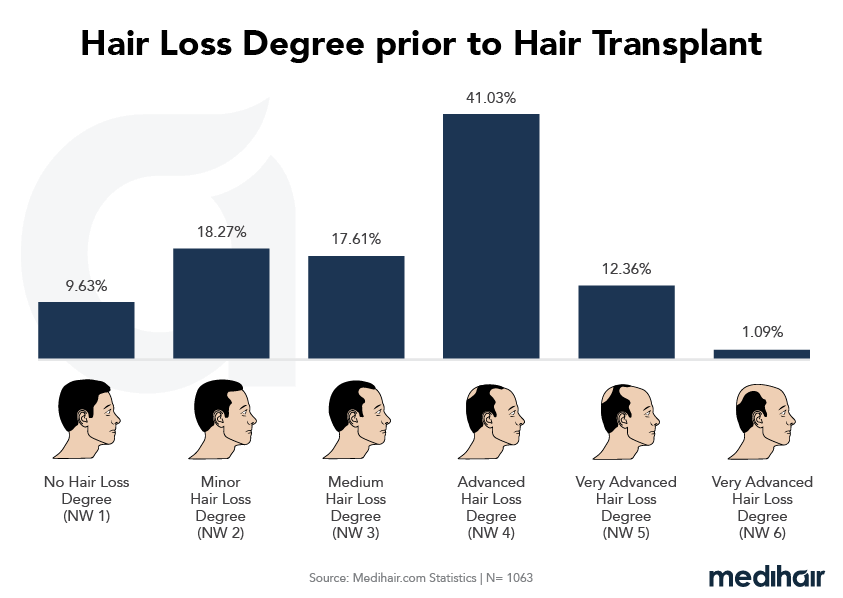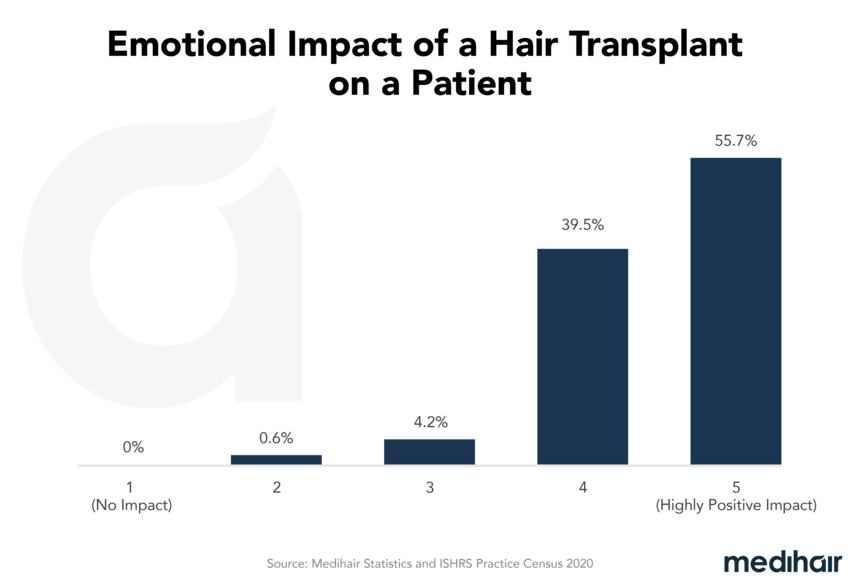Hair Loss Statistics (2024)

Hair loss is a widespread problem that affects many men and women around the globe. With more than 100,000 user per month, Medihair is one of the largest platform that provides information about proven hair loss treatments. Based on our user data and further statistics, we compile annually the latest hair loss statistics.
Most Important Findings
| Symptoms | Gradual thinning (26%) |
| Hair loss affected | 85% of men, 33% of women |
| Most common type | Alopecia Androgenetica (95%) |
| Start of hair loss | More than 5 years ago (74,34%) |
| Hair loss in family | Yes (70,5%), No (29,5%) |
| Most prescribed treatment | Finasterid (66,40%) |
| Emotional Impact of Hair Transplant | 95,2% highly or rather positive |
| Year | Market Size in USD |
|---|---|
| 2017 | USD 37.84 billion |
| 2018 | USD 40.65 billion |
| 2019 | USD 42.95 billion |
| 2020 | USD 45.28 billion |
| 2021 | USD 48.76 billion |
| 2022 | USD 52.37 billion |
| Forecast 2030 (based on 6.72% per year growth rate) | USD 88.18 billion (Revenue of the global hair loss industry in 2030) |
Frequently Asked Questions
What is the average rate of hair loss?
How many people in the world have hair loss?
What is the most common cause of hair loss?
Sources


